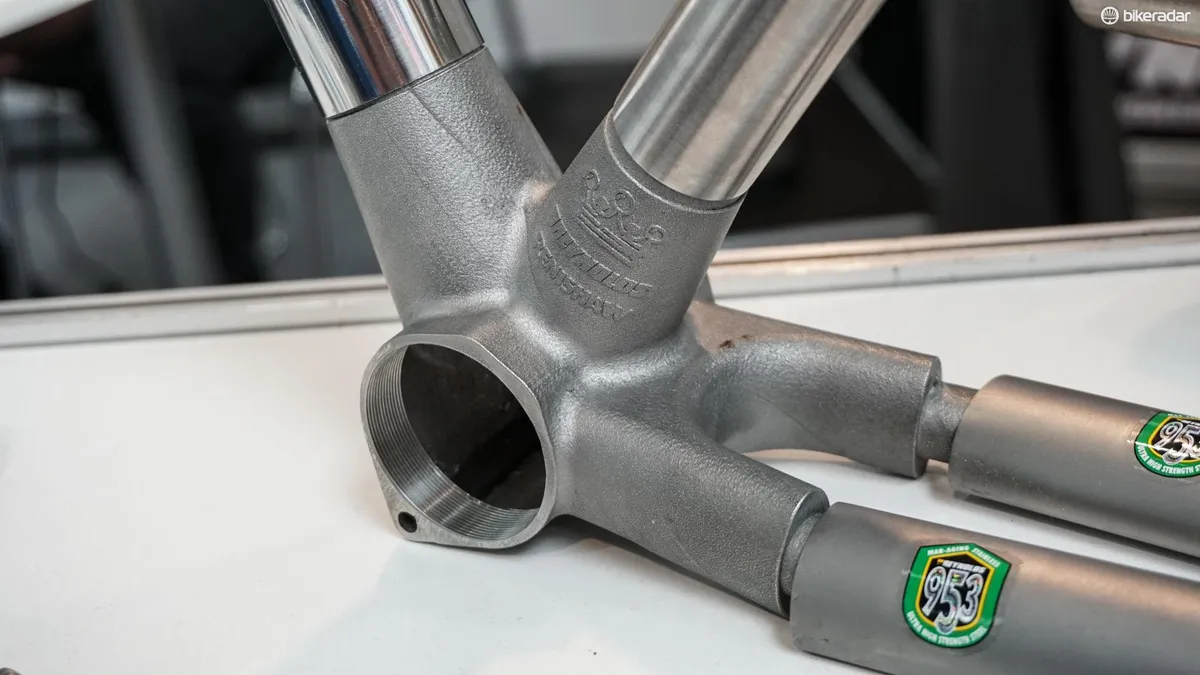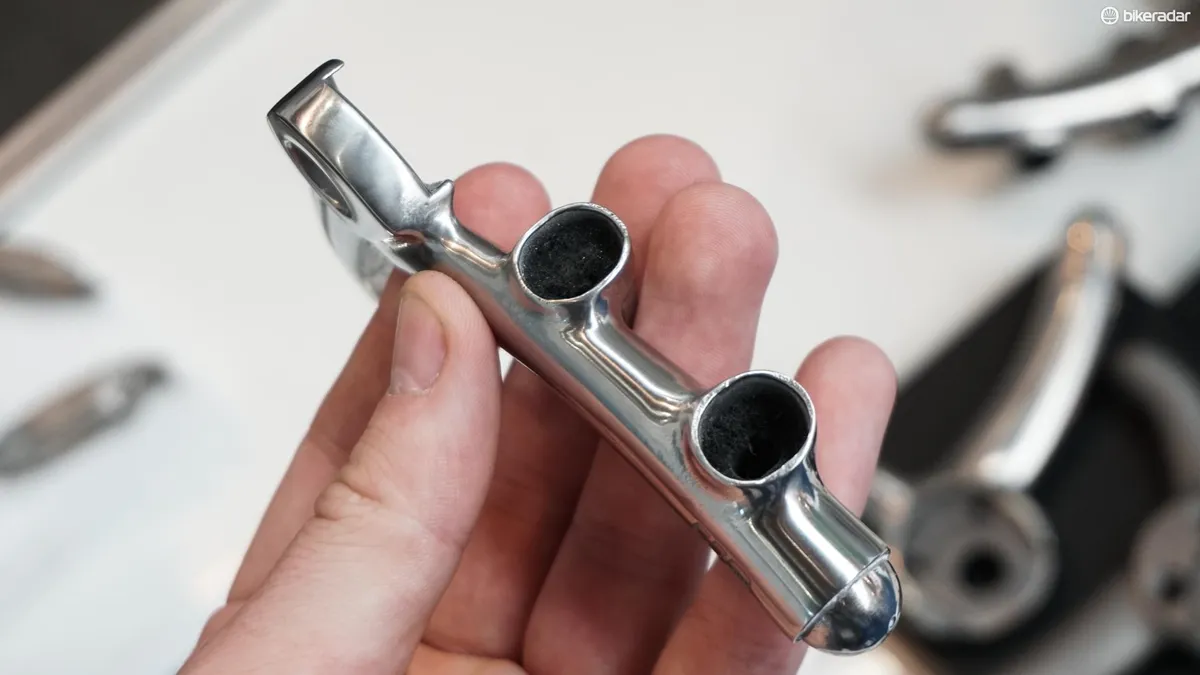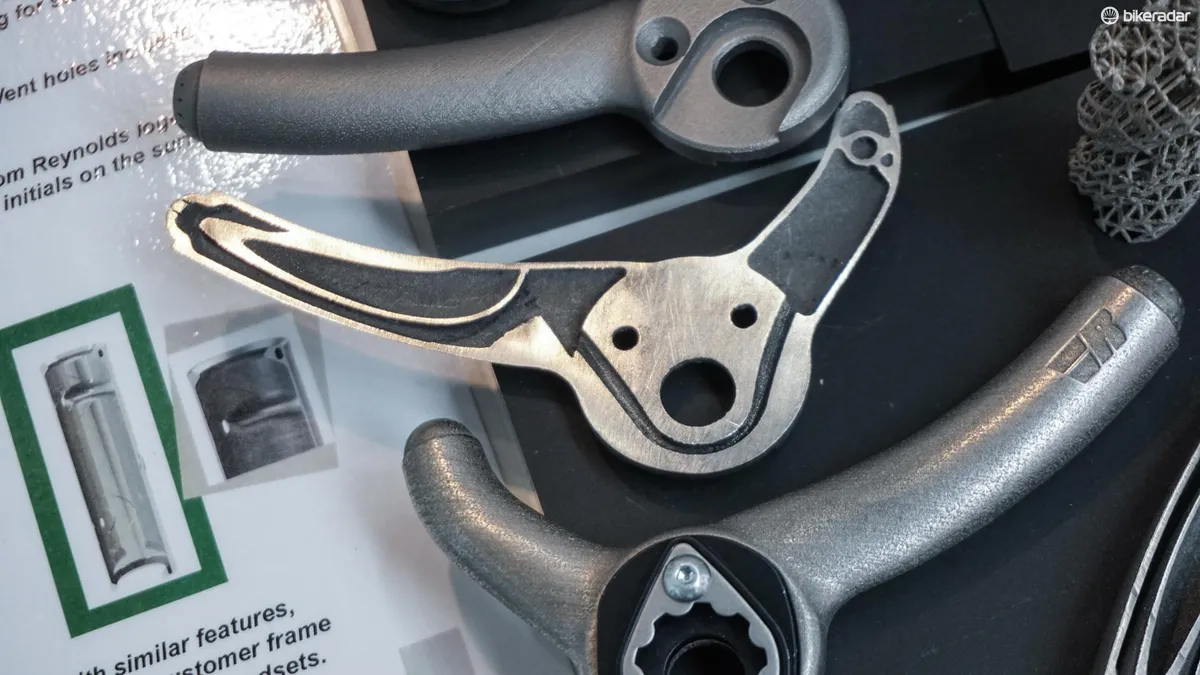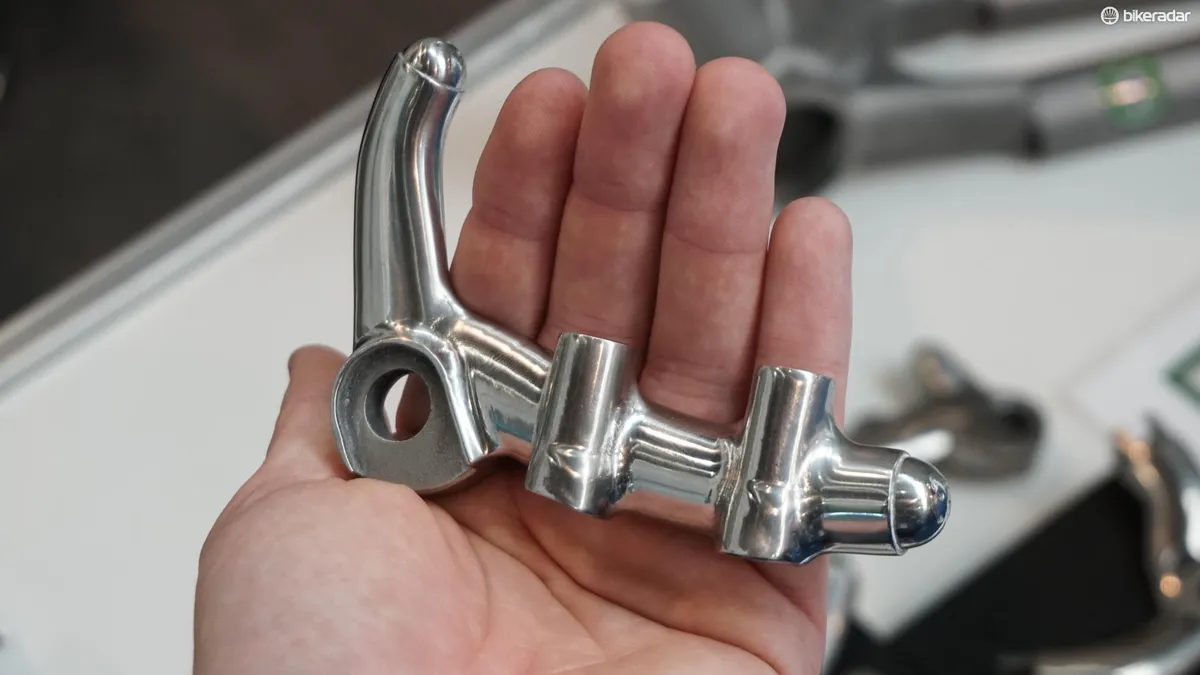Spotted at Eurobike 2018, this set of prototype 3D-printed stainless-steel frame-parts from British bicycle tubing specialists, Reynolds, has the potential to totally shake up the way custom builders and manufacturers approach producing steel frames.
Titanium additive manufacturing is a mature technology and it has been used — even in a commercial context — quite widely within the cycling industry.
However, the possibilities that 3D-printing stainless steel could offer the world of cycling have not yet been fully explored.
- The future of bicycle frames could once again be in the hands of framebuilders
- Best road bikes 2018: how to choose the right one for you
What makes 3D-printed frame-parts better?

In a time gone by, you could buy a full groupset that would include dropouts. You could then take this whole package to a frame builder who would build a bike to suit you with this and a fairly standardised — in terms of geometry at least — package of lugs.

The whole industry has changed since then. Those going to a frame builder now are far more likely to be going down that route as they want something that's either unavailable commercially or unique in some other way.
- Gallery: the weird and wonderful bikes of NAHBS 2018
- The most beautiful handmade bicycles from Bespoked 2018
With this focus on flexibility in mind, Reynolds is developing a range of customisable 3D-printed titanium and stainless-steel frame-parts that can be adapted to suit the needs of individual builders and their clients.
How 3D printing could streamline frame production

Customisability is not the only benefit of working with 3D printing — where others have used the technology to exploit its unique properties in terms of aesthetic opportunities and weight reduction, Reynolds is looking to use it to streamline production processes for custom and high-end steel-frame builders.
Primarily, as it’s possible to produce frame parts with cleaner edges and to tighter tolerances, it removes the need to mitre and otherwise prepare tubes, which is by far the most time-consuming part of any builder's life.
Will this make custom steel-frames cheaper?

There’s a burgeoning market for production-run, semi-custom steel framesets — such as Speedvagen’s OG Classic, Norther Cycles’ Lyon, and Tommii’s Canvas to name a few — and this is where I can envisage savings being passed on to the consumer; the customisable aspects of 3D production could mean there’s less time spent with the hacksaw, file and emery cloth working on lugs and more time actually brazing, designing and curating great Instagram accounts.

3D printing also allows Reynolds to produce far more intricate shapes than is possible with casting or forging. This allows it to include, among other things, routing for internal cables and reduce weight by creating internal pockets.
Hasn’t Reynolds done 3D printing before?
This isn’t the first 3D-printed project we’ve seen from Reynolds, with the firm producing a pretty wacky prototype in collaboration with Mirada that we reported on back in 2016.
The future of frame production?
There will, of course, always be those who love the timeless look of lugs — I count myself among that number — and I don’t see 3D-printed frame-parts taking over entirely, but it’s still exciting to see there’s a willingness to invest in developing new technology for steel-frame production.

